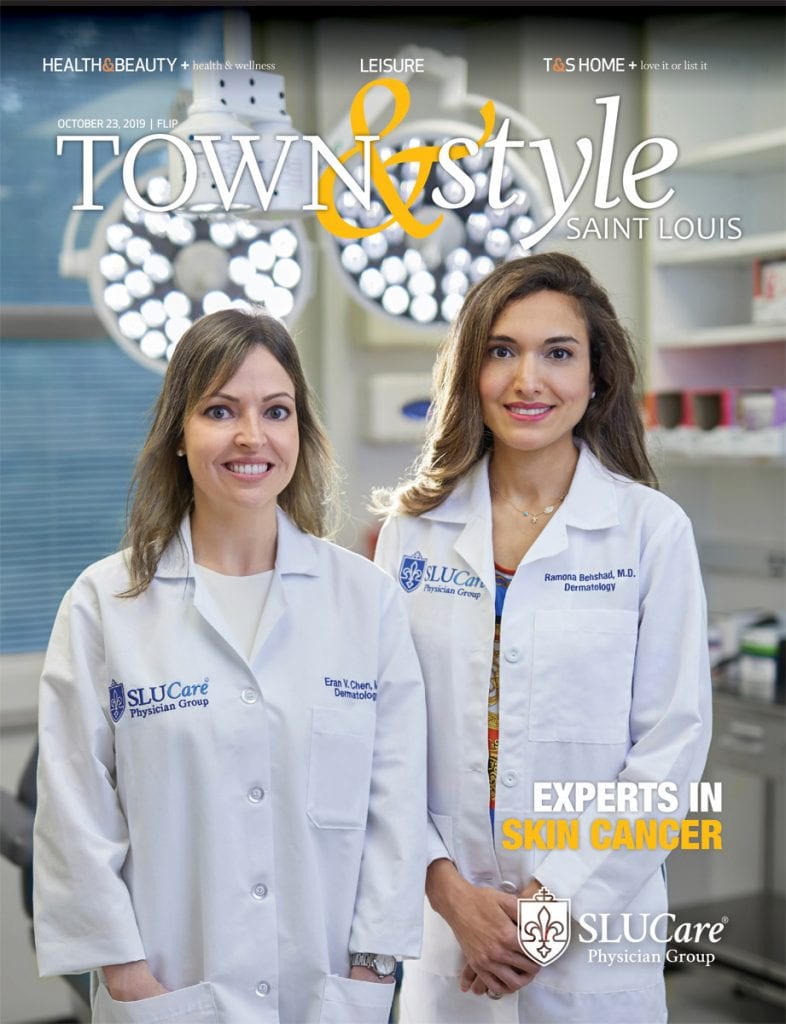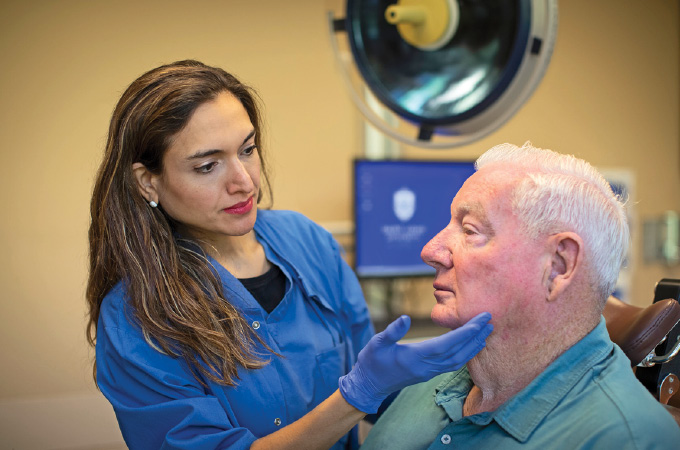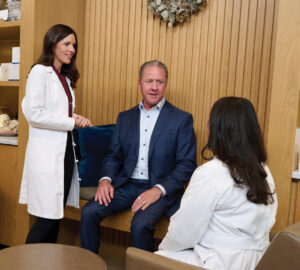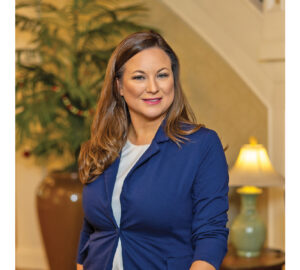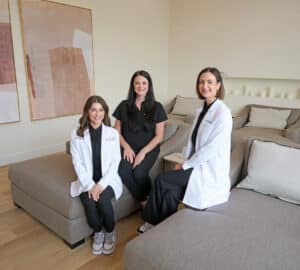Not long ago, Illinois resident Bob Williams made a doctor’s appointment to have an ear infection checked. During the visit, something more serious came to light: a suspicious-looking skin lesion on his face. Concerned, his physician referred him to SLUCare specialists for further evaluation.
The growth turned out to be basal cell carcinoma and needed to be removed. Doctors wanted to be sure the cancerous tissue was completely excised, and Williams hoped for a treatment plan that wouldn’t involve multiple 200-mile round trips from his home. Together, they decided that outpatient Mohs surgery would be the best solution for his needs. The idea behind the procedure is fairly simple. The physician removes thin layers of skin one by one, examining them under a microscope until it’s clear that the cancerous tissue is gone.
Williams had surgery at SSM Health Saint Louis University Hospital-South Campus, and he says the experience exceeded his expectations in every way. “I live in the country, and it would have been hard for me to drive back and forth for a lot of appointments,” he notes. “My doctors were great. I was in the office for less than an hour, and they looked carefully at my tissue samples until they could assure me that everything was OK. They told me everything that was going on during the procedure, and I was very happy with the results. Having the surgery done at SLUCare was really easy for me.”
The technique was developed by Dr. Frederic Mohs in the 1930s, and it is still widely used to remove skin cancers, according to SLUCare dermatologist Dr. Eran Chen. The patient can go home and resume most normal activities immediately afterward, so it’s very convenient. “Verifying that all cancer cells have been removed at the time of surgery increases the chance of a cure and reduces the need for additional treatment,” Chen says.
She adds that the Mohs procedure is used most often for basal cell and squamous cell carcinomas. “It’s done after a biopsy confirms the diagnosis,” she says. “We numb the site with a local anesthetic, and the person remains awake. With this technique, we often can keep the repair site small so it heals well and looks good.” Doctors decide whether to suture the skin or let it heal naturally based on the person’s age, facial structure, and skin texture and laxity, and patients are instructed how to gently clean the site.
Mohs surgery can be performed on several areas of the body. It’s appropriate for lesions of different sizes, and it has an impressive cure rate of about 98%, according to Chen. “We try to personalize the patient’s treatment plan based on lifestyle and preferences,” she notes. For example, if the person is physically active, doctors take that into account when deciding how to let it heal.
“Patients may experience some redness or puffiness at the surgical site for a week or two afterward, but it tends to resolve well,” explains SLUCare dermatologist Dr. Ramona Behshad. “Later on, usually no one can tell at a conversational distance that they had surgery. We’ve even had patients post photos on social media to show their friends how well their skin has healed. We like seeing that because it’s a way of helping others understand the importance of preventing skin cancer by using sunscreen and reducing exposure.”
Behshad says Mohs surgery works well in spots where there isn’t much tissue beneath the lesion, like the eyelid or nose. “Before the procedure became widespread, surgeons often removed a larger area of skin hoping to get the entire cancer, and there often were cosmetic issues as a result,” she notes. “With Mohs surgery, there are a number of benefits. We can be sure we’re getting all of the cancerous growth, much less surrounding tissue is removed, and we can pay more attention to function and appearance. We certainly never want to make it more difficult for the person to eat, see or breathe. When patients leave the office after Mohs surgery, we know we have completely treated their cancer.”
Behshad adds that if a particular case is especially complex, SLUCare physicians have a multidisciplinary team of specialists available for consultation. “Skin cancer is increasing in the population as people age and see the negative effects of earlier sun exposure,” she notes. “It’s wonderful that we have techniques and resources like these to help patients heal and return to the way they were before, which is very meaningful for their self-esteem and well-being.”
Williams says he definitely would recommend the Mohs procedure and the SLUCare team to others facing a skin cancer diagnosis. “It all went like clockwork,” he notes. “Everyone in the office was friendly and helpful, my skin healed nicely, and I didn’t have the worry of sitting at home between appointments, waiting to hear what the outcome would be. I was very satisfied with the whole process.”
SLUCare Physician Group provides comprehensive treatment for patients with skin cancer. Pictured on the cover: SLUCare dermatologists Dr. Eran Chen and Dr. Ramona Behshad. For more information, visit slucare.edu/mohs or call 314.977.9721.
Cover design by Julie Streiler | Cover photo courtesy of SLUCare Physician Group
Pictured at top: Dr. Ramona Behshad with patient Bob Williams
Photos courtesy of SLUCare Physician Group
